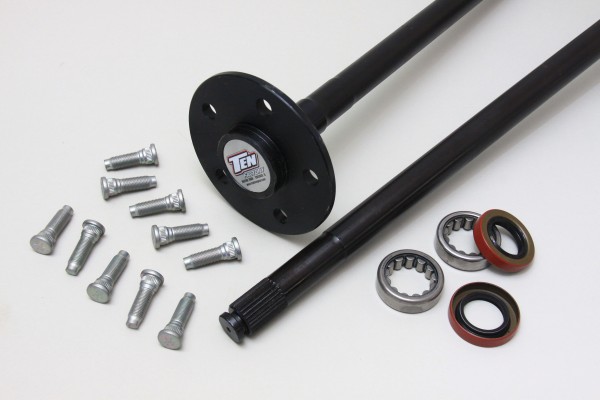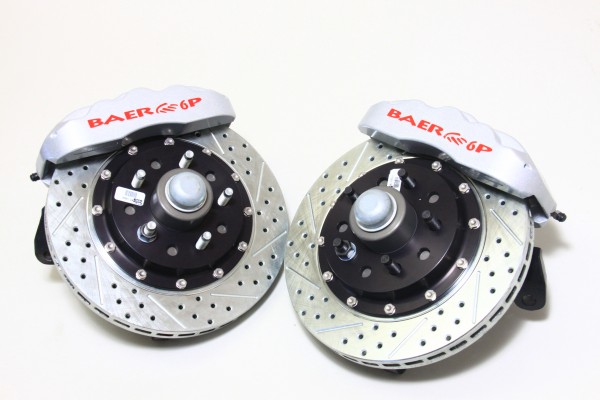If you own a 1979-93 Mustang or Mustang GT, you understand the limitations of the Fox-body Mustang’s four-lug hubs. Four-lug underpinnings limit your choice of aftermarket wheels and certainly tire size.
We’re doing a four- to five-lug conversion on a 1986 Mustang GT convertible at Modern Driveline just outside of Boise, ID, and we’re going to show you how to get it done in an afternoon. Baer and Summit Racing Equipment will provide the brute stopping power along with the four- to five-lug conversion, which makes perfect sense when you’re taking the five-lug leap.
If you’re going to perform a four- to five-lug conversion on a 1979-’84 Mustang with the original 7.5-inch rear axle, it is suggested you also convert to an 8.8-inch rear axle. It’ll make the going smoother, and you’ll wind up with a stouter rear-end at the same time. Summit Racing has everything you’re going to need to get into five-lug durability and performance. We’ve opted for 31-spline direct replacement axle shafts from Motive Gear, which will provide durability and the convenience of five-lug performance.
Let’s get started! Scroll through the slide show below to see how the process went down.







































I have a 1985 Mercury with the 4-lug pattern. Will this work for me also ? Why doesn’t someone make a 4-lug aftermarket wheel for this size? Why did Ford do this?
Yes – you can do the same exact conversion. Same chassis.
What is the part number for the parking brake cable?
Hello Jesus–it depends on your Mustang’s year and submodel (e.g. options/trim). Dorman part number C93154 fits the 1983-93 Mustang, which covers a majority of yearsd in the Fox Body era.
But there are several other options too, you might find a better cable for your needs when you filter down to your exact Mustang year and submodel here.
I have a 79 Pace car edition with 2.3 turbo